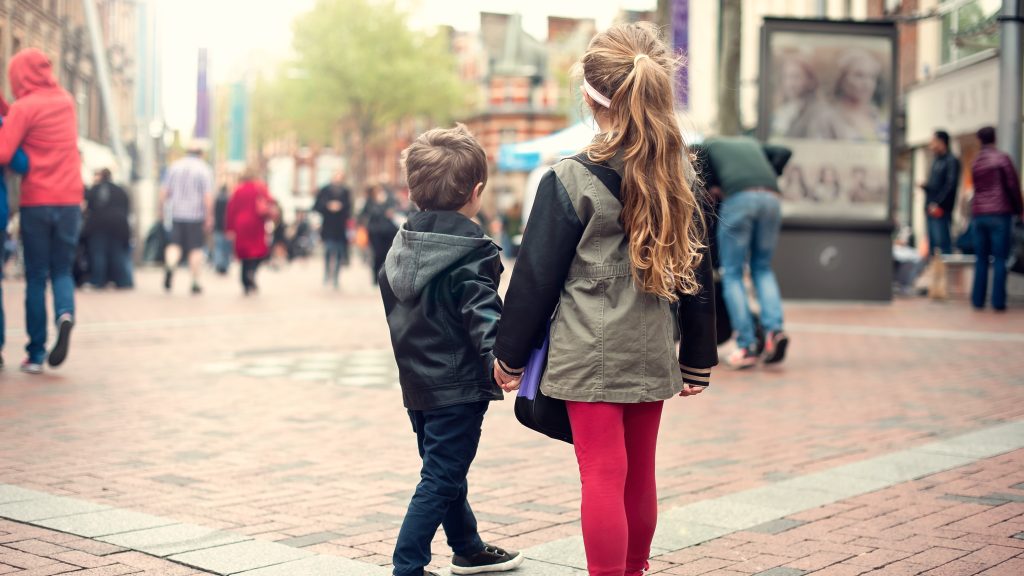
Personal safety and attacks are almost always considered an adult concern, especially for women. Women are cautioned about running or hiking alone, walking to their cars in a dark parking lot, traveling solo, and countless other scenarios where they might be considered an easy target.
However, there is another demographic that is equally at-risk when put in compromised situations—children. Depending on their age, many children are defenseless when approached by a stranger with bad intentions. Some are easily persuaded despite parents’ best efforts to educate them about “stranger danger,” and some are easily overpowered even when their instincts tell them to run.
In addition to having clear conversations about strangers and dangerous situations, children should be armed with a personal safety device. Even in instances where they know how to react, an extra layer of protection can help them get to safety.
“Safe” Environments that are Not Always Safe
While parents try to keep a close eye on young kids at all times, there are unexpected instances when they are left unsupervised—and “safe” places close to home that turn out to be anything but safe.

- Bus stop – A child’s bus stop is close to home and typically located within a neighborhood full of familiar faces. This combination makes it an assumed “safe place” with minimal supervision needed, but it’s actually a common target for child predators. This is especially true for a bus stop with just one child. While it might seem safe to watch your child from a window or the front door until they’re safely aboard their bus, even this small separation gives an abductor plenty of time to kidnap.
- Playground – Playgrounds are full of laughing, active children enjoying the favorite childhood pastime of swings, slides and monkey bars. It’s a common meet-up place for parents who have organized playdates, which often turns into a catch-up session among the adults. Being distracted from your children even for a minute or two gives a predator enough time to lure a child away from the playground.
- Front yard – Children love to play outside when the weather is nice, and parents encourage this for the fresh air and exercise is provides. However, children and parents should be aware that people passing by on foot or in cars might not have the best of intentions. A casual hello and small talk with your child might be their way of making your child feel more comfortable with them the next time they pass by.
In each of these instances, a child feels very comfortable in their environment and therefore comfortable with the stranger they’ve encountered. If they get too close to the stranger or find themselves within their grasp before they realize the bad intention, it’s critical they have a personal safety device like Hootie to quickly draw attention.
Daily Routines that Could Prove Dangerous
Parents and kids become very complacent in daily routines without much concern, until the one day that routine suddenly changes and the child is put in a dangerous situation.
- Waiting after sports practices – Youth sports are an extremely beneficial aspect of childhood, teaching kids teamwork, sportsmanship and perseverance. With parents busy shuffling multiple kids to multiple places, it’s not unheard of for a parent to be late picking their child up from the soccer or baseball field. While a coach should always wait until all children are picked up, sometimes back-to-back practices make sports fields chaotic and a late pickup may go unnoticed. This is an opportunity for a predator to approach an unsupervised child.

- Walking to and from school – Kids walking to and from school is quite common, but is safest when done in groups. This is often a natural occurrence with neighborhood friends meeting up for the walk every morning and afternoon. However, there may be instances when some of those kids have an after-school obligation or one child is sick when just two of them walk together. These unexpected yet common scenarios mean a child is walking to and from school alone, making them an easy target.
Teaching Safety at a Young Age
For decades, parents worried very little about their children’s safety when they were out in the neighborhood riding bikes, playing with friends, or walking home from school. That’s sadly not the reality today, as cases of child abduction have increased exponentially and predators have devised clever tactics for gaining trust from children.
For this reason, it’s critical that parents teach their children safety protocols at a young age. This should include discussions about:
- How to react if approached by a stranger with a proposition of any sort (e.g. candy, money, toys, etc.)
- What to do if an unfamiliar car stops at their bus stop
- Safety precautions when walking home from school
- Alerting a coach if a parent hasn’t arrived yet for pickup
- How to use a personal safety device and how to keep it easily accessible
Where to Attach a Personal Safety Device
For adults, it’s intuitive where to keep a personal safety device for quick and unexpected use. They are often attached to purse straps, keychains, or in their pocket. For children, easy access to a personal safety device such as Hootie is a little more complicated since they don’t carry a purse or keys. For children, consider attaching their device to a backpack zipper or their belt loop, hidden under their shirt or sweatshirt.
When it comes to safety, most parents are fully aware that children are targeted almost as often as women. However, some believe in the notion that they live in a safe neighborhood or “it won’t happen to us.” All parents should exercise caution regardless of their environment, and thankfully, technology exists today to help children escape and draw help.
